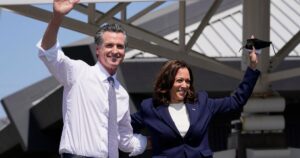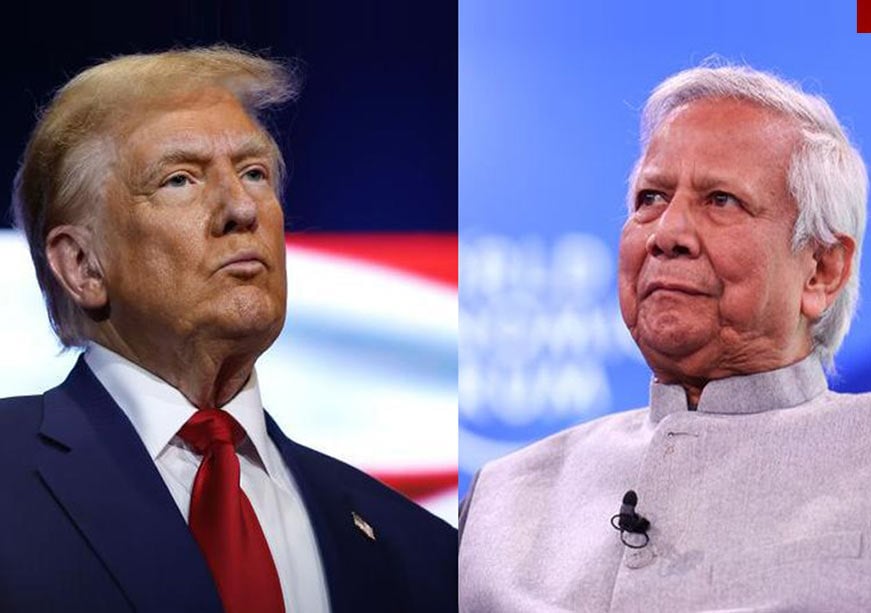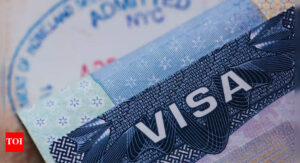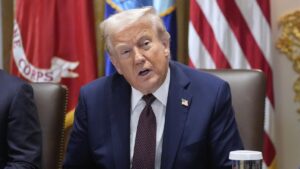According to recent media reports, the United States is seeking to build a port in Bangladesh under the Quad Ports of the Future Partnership. Set to be formally launched in October 2025, this is a strategic collaborative initiative launched by the Quad (comprising Australia, India, Japan, and the United States) to bolster maritime connectivity, logistics resilience, and quality infrastructure in the Indo-Pacific, through sustainable and resilient port infrastructure development. It seeks to harness the grouping’s collective experience and expertise, to “coordinate, exchange information, share best practices, and mobilize both government and private sector investments in quality port infrastructure.” The US has reportedly conducted a preliminary meeting with key stakeholders in Dhaka to discuss prospects for port development and is expected to undertake a comprehensive feasibility study before formulating concrete proposals. This accompanies recent reports of a large contingent of US military personnel arriving at Chattogram, Bangladesh, in early September, home to the country’s largest port. While the Quad’s interests are indeed at the forefront of this port development initiative, it also embodies US national interests to gain a firmer foothold in the Bay of Bengal region, which is fast becoming a zone of major power competition.
The Power of Ports
The north-eastern wing of the vast Indian Ocean, the Bay of Bengal, has gained strategic significance in recent years due to the economic liberalisation of Bay littoral countries, China’s growing presence in the Bay to provide maritime access to its western provinces, and the emergence of the Indo-Pacific concept. These factors have endowed the Bay’s geography with geopolitical significance as a connecting space between the Indian and Pacific Oceans traversed by important Sea Lanes of Communication and in proximity to critical chokepoints such as the Strait of Malacca, vital for energy trade, and other important resources. A future marked by energy insecurity has thus given rise to a scramble for an anchor in this maritime space, not only to protect uninterrupted energy flow but also to secure access to the hydrocarbon reserves this sea holds. China’s assertive rise in this region is viewed as a threat to the existing status quo, necessitating extra-regional stakeholders such as the US and Japan to build a presence in this region via partnerships with the rising economies framing the Bay.
However, as developing countries often lack the necessary resources or technical know-how, their ports are constructed with foreign assistance in the form of developmental partnerships.
Collaborations in port development are at the forefront of such partnerships for several reasons. Foremost, high-efficiency port infrastructure is a necessity in all Bay littoral states, as they are highly dependent on smooth maritime transport for their imports and exports, which contribute substantially to their national economies. Maritime transport is the backbone of global trade, with more than 80 percent of goods being transported by sea. Ports are the nodes of this connectivity. However, as developing countries often lack the necessary resources or technical know-how, their ports are constructed with foreign assistance in the form of developmental partnerships. For the investing country, ports are entry points into a foreign economy, with strategic potential to stimulate industrial development, secure trade and energy needs, and enhance naval capabilities. Engaging in port development activities is thus a mutually lucrative endeavour that not only strengthens diplomacy but also goodwill. Owning and operating port terminals further optimises such engagement, providing commercial gains to the foreign country.
Ports are also strategic assets, as control over these facilities translates into decision-making power regarding vessel prioritisation for berthing and other services. In strategic terms, this means the ability to influence or disrupt supply chains, including those vital to energy security. During times of conflict, it may also involve the capacity to block or restrict access to certain ships, reinforcing the geopolitical significance of ports within the broader SLOC framework. Moreover, commercial ports can provide essential naval functions such as refuelling, provisioning, and ship repair. Sensitive infrastructure—communication systems, radars, and weapons platforms—can be installed without a dedicated military base.
US Without a Finger in the ‘Port’ Pie?
Beyond these advantages, developing and operating ports in Bangladesh comes with its own set of perks. Situated at the triangular peak of the Bay of Bengal, Bangladesh is ideally positioned for surveillance in this maritime space. Its proximity to India, Myanmar, Nepal, and Bhutan also provides it with a unique geographic advantage of being at the heart of the Bay’s hinterland connectivity, with a coastal gateway. It is therefore not surprising that Bangladesh’s ports have attracted international investments. The Chattogram Port, which caters to over 90 percent of the country’s maritime commerce, enjoys Chinese investments. Both China and India have development stakes in the Mongla Port, the country’s second-largest port. Japan is developing the deep seaport at Matarbari.
Situated at the triangular peak of the Bay of Bengal, Bangladesh is ideally positioned for surveillance in this maritime space. Its proximity to India, Myanmar, Nepal, and Bhutan also provides it with a unique geographic advantage of being at the heart of the Bay’s hinterland connectivity, with a coastal gateway.
The US remains the only major power with high stakes in the Bay but without port investments. The reason for this is two-fold. First, US partnerships have essentially been rooted in diplomatic, security, and governance channels rather than infrastructural investments. Second, the US shared an erratic relationship with the former Awami League government, which ruled Bangladesh for fifteen years, before the regime change in August 2024. Frequent differences over democratic approaches and human rights strained the relationship. Reportedly, in 2023, there was a rumoured American interest in St. Martin’s Island, in exchange for which Washington, D.C. would support the Awami League government in the 2024 elections. While such speculations were denied by Matthew Miller, Spokesperson for the US Department of State, the strategic importance of the island is undeniable. Located in the northeastern part of the Bay, it is approximately 9 km south of the Teknaf coast in Cox’s Bazaar, Chattogram, and 8 km west of northwestern Myanmar. It is thus in proximity to both Bangladesh’s Chinese-developed submarine base, BNS Sheikh Hasina, and Beijing’s intelligence facility at Myanmar’s Coco Islands, and ideally positioned to facilitate surveillance in the Bay. Hasina’s unorthodox statements about her denial of access to these islands to the US sparked speculations that a foreign hand was at play behind her ouster.
Ports and Powerplays
The interim government now at the helm of affairs in Dhaka, however, has a different approach to the US, which itself underwent a political transition in January 2025. Although Bangladesh Chief Advisor Muhammad Yunus has been known to be friendly with the Democratic Party, the US opposition, he greeted Republican candidate Donald Trump’s electoral win with a letter that highlighted openness to partnerships. While the halt on US foreign aid stopped several developmental projects in Bangladesh, Yunus met Alex Soros, the son of US billionaire George Soros, days after the new Trump administration paused all foreign aid, discussing viral economic reforms to rebuild the economy. Both countries have also held several rounds of tariff talks as they work to identify ways to boost American exports to Bangladesh. The latter seeks to increase imports of US agricultural produce: cotton, wheat, corn, and soybeans. The US also has a significant stake in Bangladesh’s ready-made Garment industry, as it is the single-largest market for Bangladesh’s apparel exports. As this industry drives Bangladesh’s economy, the country’s jobs, competitiveness, and overall economic performance are directly shaped by US market demands and trade policies, including tariffs. The US, conversely, benefits from accessing Bangladesh’s low-cost, mass-produced clothing.
It is noteworthy that although the US port development initiative is under the purview of Quad, it can potentially translate into competition with other Quad countries, as ports, especially those in proximity to one another, compete to attract the most traffic.
A US-developed or operated port in Bangladesh would therefore be mutually beneficial. However, it would significantly increase the strategic competition in the Bay of Bengal region, not only with China, but also with India and Japan, which are already heavily invested in Bangladesh’s port development sector. It is noteworthy that although the US port development initiative is under the purview of Quad, it can potentially translate into competition with other Quad countries, as ports, especially those in proximity to one another, compete to attract the most traffic. They are not necessarily built for regional cooperation, but rather for national profits. Dhaka will require considerable diplomatic finesse to navigate the competing interests of its development partners while safeguarding its own priorities, ensuring that it can optimally capitalise its geopolitical advantages. Dhaka’s diplomatic agility will also determine whether it becomes a bridge for cooperation or a flashpoint of competition in the Bay of Bengal region.
Sohini Bose is an Associate Fellow with the Strategic Studies Programme at the Observer Research Foundation.











